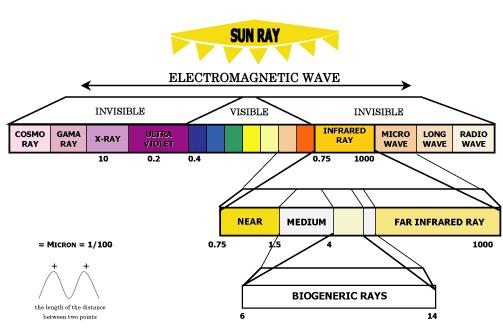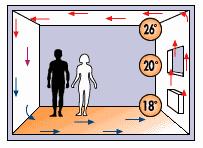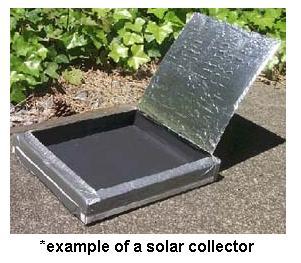-
Specializing in:
- Indoor Electric Radiant Floor Heating
- Solar Air And Water Heating Systems
- Electric Snow And Ice Melt
- Soil Heating For Green Houses
- U.S. Floor Heating Quote
- U.S. Solar Heating Quote
- U.S. Snow Melting Price List
- U.S. Soil Heating Price List
- U.S. Infrared Inspection Price List
- Heating Your Floor with Heated Floors
- Get Free Energy with Solar Space Heating
- No More Shovel with Snow Melting
- Plant Year Round with Soil Heating
- Thermal Imaging Infrared Inspection
- Reduce Your Carbon Footprint
- Education Center
- Sitemap

Solar Space Heating
Solar Energy
Solar energy is radiated from the sun naturally. The sun releases a range of rays (forms of energy), which is radiated on the Earth, and trapped within our atmosphere. This energy takes different forms, including visible rays (rays that can be seen by the human eye, such as green, red, etc) and invisible rays (such as ultraviolet, gamma, and infrared).

If you were to add up the amount of energy mankind has used in the history of our planet (every sourced included: electricity, nuclear, steam, fire, etc), it would be the equivalent to about 3 days of solar energy. Modern day technology has found many uses for these various forms of energy the sun prodcues, one of which is Solar Space Heating.
Solar Air Heat
 Solar space heating systems use air as the working fluid for absorbing and transferring solar energy. The units trap infrared energy in the system, take in cold air from the room, heat the air within the unit, then pass the heated air into the room, resulting in free heated air for the space. Solar air collectors (devices to heat air using solar energy) can directly heat individual rooms or can potentially preheat the air passing into the heat recovery ventilator or through the air coil of an air source heat pump.
Solar space heating systems use air as the working fluid for absorbing and transferring solar energy. The units trap infrared energy in the system, take in cold air from the room, heat the air within the unit, then pass the heated air into the room, resulting in free heated air for the space. Solar air collectors (devices to heat air using solar energy) can directly heat individual rooms or can potentially preheat the air passing into the heat recovery ventilator or through the air coil of an air source heat pump.
Air entering a collector at 70 degrees F (21.1 C) is typically warmed an additional 70 - 90 degrees F (21.1 - 32.2 C). The air flor rate through standard collectors should be 1 - 3 cubic feet (0.03 - 0.76 cubic meters) per minute for each square foot (0.09 square meters) of collector. The veolicty should be 5 - 10 feet (1.5 - 3.1 meters) per second.
Solar Air Collectors
 The collector has an airtight and insulated metal frame and a black metal plate for absorbing heat with glazing in front of it. Solar radiation heats the plate that, in turn, heats the air in the collector. An electrically powered fan or blower pulls air from the room through the collector, and blows it back into the room. Roof-mounted collectors require ducts to carry air between the room and the collector. Wall-mounted collectors are placed directly on a south-facing wall or roof, and holes are cut through the space for the collector air inlet and outlets.
The collector has an airtight and insulated metal frame and a black metal plate for absorbing heat with glazing in front of it. Solar radiation heats the plate that, in turn, heats the air in the collector. An electrically powered fan or blower pulls air from the room through the collector, and blows it back into the room. Roof-mounted collectors require ducts to carry air between the room and the collector. Wall-mounted collectors are placed directly on a south-facing wall or roof, and holes are cut through the space for the collector air inlet and outlets.
Air collectors produce heat earlier and later in the day than liquid systems, so they may produce more usable energy over a heating season than a liquid system of the same size. Also, unlike liquid systems, air systems do not freeze, and minor leaks in the collector or distribution ducts will not cause significant problems, although they will degrade performance. However, air is a less efficient heat transfer medium than liquid, so solar air collectors operate at lower efficiencies than solar liquid collectors.
Simple "window box collectors" fit in an existing window opening. They can be active (using a fan) or passive. In passive types, air enters the bottom of the collector, rises as it is heated, and enters the room. A baffle or damper keeps the room air from flowing back into the panel (reverse thermosiphoning) when the sun is not shining. These systems only provide a small amount of heat, since the collector area is relatively small.
Most solar air heating systems are room air heaters, but relatively new devices called transpired air collectors have limited applications in homes, such as hot water heaters and dryer heating.